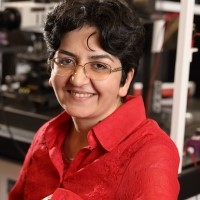The Fabrication and Characterization of Thermoelectric and Thermomagnetic Materials
A special issue of Crystals (ISSN 2073-4352). This special issue belongs to the section "Hybrid and Composite Crystalline Materials".
Deadline for manuscript submissions: closed (1 March 2021) | Viewed by 4573
Special Issue Editors
Interests: Electron and phonon transport modeling; materials and device design; fabrication and characterization of energy conversion systems such as thermoelectrics; solar cells; and diffusion cells; Heat management in high power electronics and optoelectronic
Special Issues, Collections and Topics in MDPI journals
Special Issue Information
Dear Colleagues,
Thermoelectric and thermomagnetic materials have been the subject of research for two centuries. Combined electron-hole-phonon transport in these materials is of fundamental interest and is the base of direct thermal to electrical power generators and solid-state refrigerators. The efficiency of these devices is an increasing function of the material figure of merit. In recent years, fabrication and characterization of the nanostructured bulk materials as well as low dimensional materials and their heterostructures have enabled improved thermoelectric and thermomagnetic figures of merit. The discovery of new classes of topological materials, such as time-reversal-symmetry-broken Weyl semimetals, has opened the pathway to and new strategies in the design of highly efficient thermoelectric and thermomagnetic materials and devices. Organic thermoelectrics, in turn, has opened the pathway to large area flexible thermoelectric devices. Much effort has been dedicated to the development of hybrid inorganic/organic thermoelectric composite materials with an enhanced Seebeck coefficient and electrical conductivity in the quest to improve the thermoelectric performance. In this Special Issue, we invite you to submit your work focused on the strategies to design, fabricate, and characterize highly efficient thermoelectric and thermomagnetic materials and devices, especially with a focus on topological materials, layered materials and heterostructures, and organic thermoelectrics. Strategies to improve device efficiency beyond the figure of merit, and new applications for these modules are also of interest.
Prof. Mona Zebarjadi
Dr. Junxi Duan
Dr. Mousumi Mitra
Guest Editors
Manuscript Submission Information
Manuscripts should be submitted online at www.mdpi.com by registering and logging in to this website. Once you are registered, click here to go to the submission form. Manuscripts can be submitted until the deadline. All submissions that pass pre-check are peer-reviewed. Accepted papers will be published continuously in the journal (as soon as accepted) and will be listed together on the special issue website. Research articles, review articles as well as short communications are invited. For planned papers, a title and short abstract (about 100 words) can be sent to the Editorial Office for announcement on this website.
Submitted manuscripts should not have been published previously, nor be under consideration for publication elsewhere (except conference proceedings papers). All manuscripts are thoroughly refereed through a single-blind peer-review process. A guide for authors and other relevant information for submission of manuscripts is available on the Instructions for Authors page. Crystals is an international peer-reviewed open access monthly journal published by MDPI.
Please visit the Instructions for Authors page before submitting a manuscript. The Article Processing Charge (APC) for publication in this open access journal is 2600 CHF (Swiss Francs). Submitted papers should be well formatted and use good English. Authors may use MDPI's English editing service prior to publication or during author revisions.
Keywords
- thermoelectric
- thermomagnetic
- power generators
- solid-state refrigerators
- topological materials
- organic materials
- hybrid organic/inorganic materials
- Weyl semimetals







